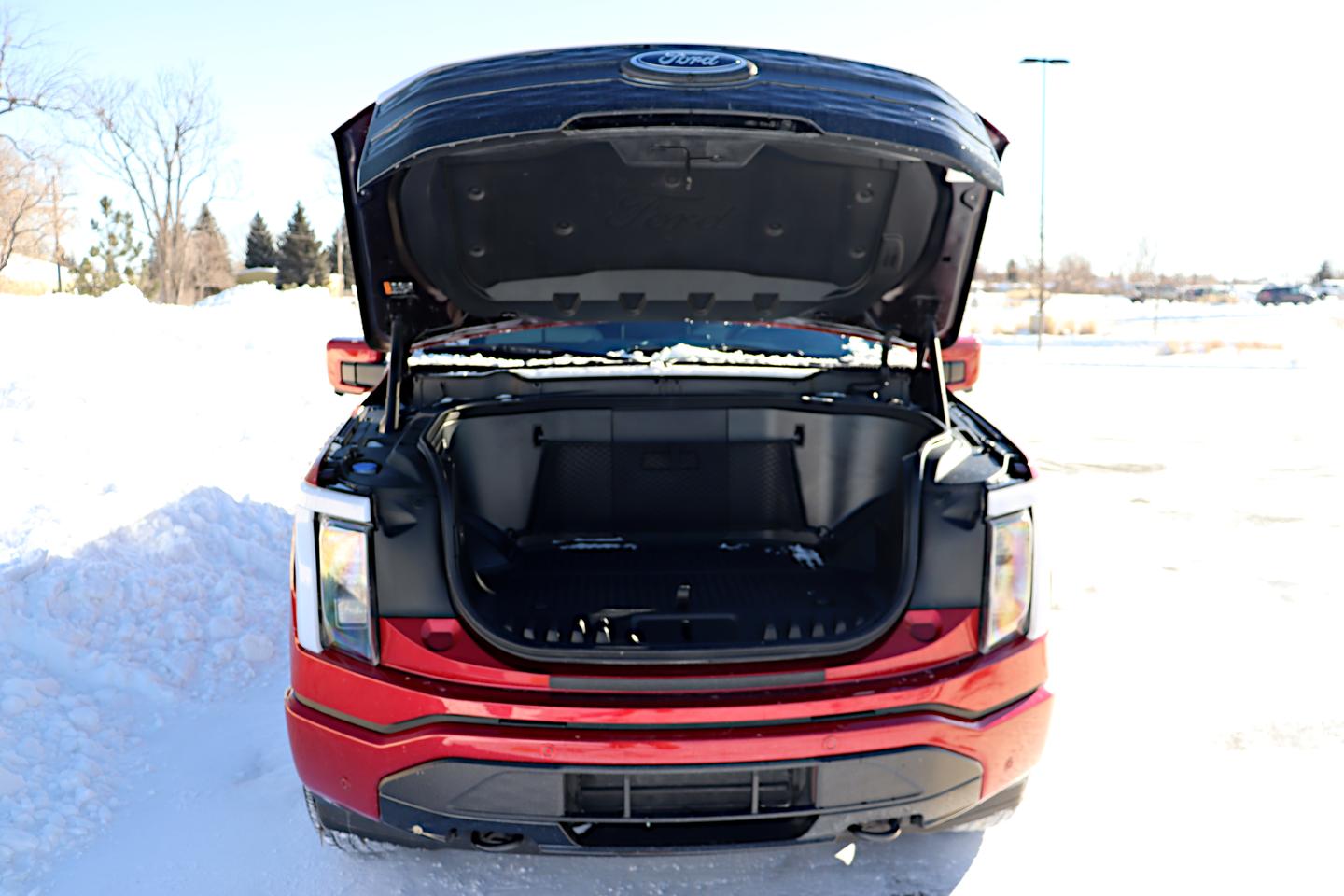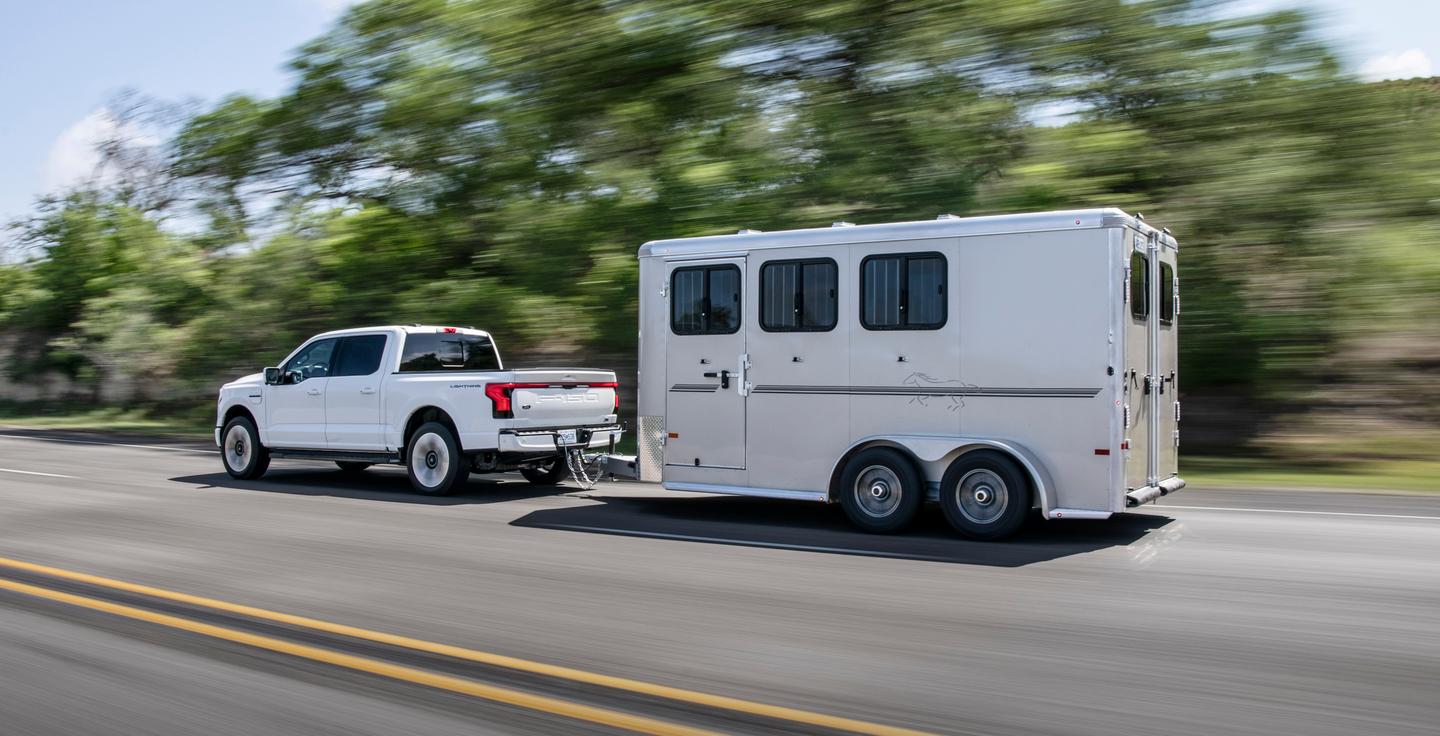After a week with the 2023 Ford F-150 Lightning in a place where trucks are actually needed, we learned that it is in fact a good truck. Provided you don’t have too far to go, that is.
At a glance
- Only vaguely related to the rest of the F-150 lineup
- Range estimates are not even a ballpark when towing or hauling
- Can literally power your house – for days
- Good use case for many truck buyers
The Ford Lightning is one of the first full-production electric pickup trucks. Part of the F-150 lineup, the best-selling pickup in North America, it’s only visually related to the other F-150 options being sold. Most of the F-150 Lightning’s underpinnings are largely unrelated to its like-named siblings. Because the F-150 Lightning is heavier than its gasoline siblings (by a large margin, roughly 2,000 lb/907 kg), it cannot use the same chassis.
Instead, a chassis that is more similar to the Super Duty (heavy duty) line of trucks is used, but customized to match the needs of a battery-electric truck that has no hoses or pipes running from fore to aft. Instead of a drive shaft tunnel and space for a fuel tank and exhaust lines, the Lightning has a big square battery block running much of its length between the axles.

Aaron Turpen / New Atlas
Bodywork on the 2023 F-150 Lightning is similar to the rest of the F-150 line, with a lot of the aluminum sheets being from the same stamps. Most of the differences in bodywork between the standard F-150 and the Lightning are subtle. Headlamps, tail lights, badging, the location of the “fuel port” door and other details make up the only discernible differences.
Not as obvious, but chief amongst the Lightning’s attributes is the extremely useful front trunk (“frunk”). It’s as large as the trunk of most large sedans, and sits at a realistic load height. It’s potentially the most useful part of the entire truck for most people.
Inside the Lightning, seating and most of the controls layouts are also going to be very familiar to F-150 owners and fans. Seating is accommodating (and then some), materials are a mixture of good-looking and robust, and there are plenty of plugs, storage spots, etc. The Lightning comes only as a crew cab, with large back seats capable of seating three full-grown adults without a lot of squeeze.
Mechanically, the F-150 Lightning is also very different from its siblings. Either of two very large battery options provide power to electric motors situated on each axle (the F-150 Lightning comes standard with all-wheel drive). One of those options takes the form of a 98-kWh battery pack that provides about 240 miles (386 km) of range, while the other is a 131-kWh pack that should be good for about 300 miles (483 km). Those range numbers are highly variable, however, and being able to vaticinate what the actual range will be is a complicated affair with this truck.
We drove a 2023 Ford F-150 Lightning with the larger battery pack, and in its topmost trim point. Driving around town with only short stints at over 45 mph (72.4 km/h) meant that we were well on our way towards achieving something akin to the claimed 300 miles of range. Once on the highway or freeway, however, those higher speeds meant far less range. Big vehicles displace big amounts of air, after all, so that added speed came at a cost – roughly 20% of the truck’s expected range.
All of that assumed that there was no load on the truck whatsoever. Nothing in the cargo bed, no trailer attached, and no extra people in the vehicle. Adding any of those things drops range even more. Sometimes drastically.

Ford
Towing with almost any kind of trailer larger than what you’d put behind your compact car killed range the most. Like most others who’ve tested the F-150 Lightning in towing, we found that nearly 70% of range was lost when towing at highway speeds came into the picture. Three hundred miles turned into 100 very quickly. A lack of access to DC fast charging and the extra time to wait for that charge to come – assuming you can afford the wallet-smash that fast charging often entails – would mean towing is nearly useless with this truck.
Cargo hauling wasn’t much better. The heavier the F-150 Lightning is loaded, the worse its mileage gets – down to about half its total range when loaded near to maximum (about one ton or 2,235 lb /1,013 kg). That means if you’re hauling camping gear, lumber for a new shed, hay bails, or anything else substantial, you can drive maybe 150 miles (241 km) before needing to hit that charger.
For comparison, a standard turbocharged 3.5L F-150 under similar loads will still manage over 200 miles (322 km) per tank. And fill-ups take about five minutes, versus 45 if you’re fast charging. Someone towing their boat to the lake in a Lightning will likely be pushing mileage limits, whereas in the gasoline model there are no worries.
An advantage to the Ford Lightning’s battery, however, is its use in an emergency. Ford estimates that the 100-kWh battery can power the average US household for about three days in a power outage. One hundred kilowatt-hours is over three times the average daily home’s usage (29 kWh) in the US. The Ford F-150 Hybrid can also power a home, but not at full scale.
Another benefit of the Ford F-150 Lightning is its power generation for the worksite. Similar to the F-150 Hybrid we reviewed not long ago, its bank of bed-mounted plugs can also power tools, lights and more – simultaneously.
The 2023 Ford F-150 Lightning fits a specific niche of truck buyers … a relatively large niche in many urban and suburban areas. These are truck owners who largely use their pickups as a glorified sedan for hauling themselves and sometimes other people around. Truck owners for whom the added utility of the truck, namely towing and hauling, are occasional-use and not regular-use items.

Aaron Turpen / New Atlas
For getting to and from work every day, and heading to the hardware store or big box outlet every two or three weeks, the Lightning is a great option. To go any further or do any more, however, it’s probably better to opt for the F-150 Hybrid instead.
Product Page: 2023 Ford F-150 Lightning
Source of Article